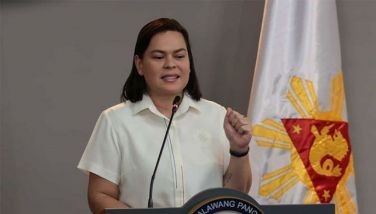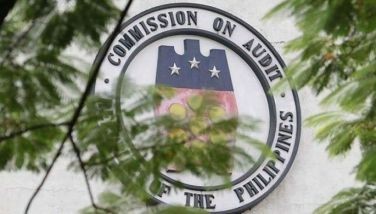A brave new world
MANILA, Philippines - “Behold, I make all things new.” — Revelation 21:5
The law on poll automation, Republic Act 9369, is a first in the political history of the Philippines. It is new and signals the abandonment of the traditional manual system of elections that has been used in the country since July 30, 1907. In its place, a paper-based automated election system will be adopted, using the precinct count optical scan (PCOS) machines.
It is hoped that with the new system, the national and local elections will be a far cry from and a vast improvement over the century-old mano-mano system of elections that has spawned electoral maladies like misreading and misappreciation of ballots, ballot switching, ballot snatching, ballot stuffing, dagdag-bawas, etc.
A first in Asia
Full and extensive poll automation in the 2010 elections, involving 7,100 islands, will be a first not only in the Philippines but also in Asia. And it will be an addition to the Philippines’ many firsts.
Other notable firsts in the Philippines include Jose Rizal, the first Asian exponent of democracy; the Malolos Constitution, the first democratic constitution in Asia; the Malolos Republic, the first republic in Asia; the Biak-na-Bato Republic, the first time a colonized people in Asia sought formal independence from a major European power; and Lapu-Lapu, the first warrior-chief in Asia to defy and defeat an imperial European power.
In the world, the Philippines will be one of the few countries to use a nationwide automated system in elections.
A giant step to the gateway of real democracy
In Roque v. Comelec GR 180756, September 16, 2009, the Supreme Court noted that the choice of the PCOS is the product of honest-to-goodness studies by the Commission on Elections (Comelec), after consultation with the Comelec Advisory Council, and lessons learned from the Autonomous Region in Muslim Mindanao (ARMM) 2008 automated elections.
In his concurring opinion, Chief Justice Reynato Puno wrote that this poll automation is a big forward “step to the gateway of real democracy where the vote of the people is sacred and supreme.”
Voting technologies in the US
It is interesting to note that in the United States, there are several voting technologies, but the choice of most Americans today is optically scanned paper, the same technology to be used in the Philippines in 2010. At least 104 million voting Americans are using optically scanned paper; 55 million voting Americans are using direct-recording electronic; 10 million voting Americans are using lever machine. Other voting Americans are using technologies like punch card (0.25 million), mixed (9.15 million) and hand-counted (.095 million).
The state of Minnesota has been using PCOS since September 15, 1987.
Official ballots/ballot boxes
The official ballot will be more than two feet in length, containing preprinted names of candidates. One side of the ballot can contain 150 to 300 candidates with their printed names, stage names/or nicknames and political-party affiliations. They will be alphabetically arranged and numbered in accordance with their alphabetical listing. Each party-list group shall also be assigned a number which shall be in sequential order beginning with the number “1” in accordance with their alphabetical listing.
Positions appearing in the ballots will be color-coded.
To ensure that ballots can be used only in the designated precincts and not in any other (as in the past manual elections), ballots will be precinct-specific. Each paper ballot will have security marks, bar codes and an ultraviolet mark so that fake ballots will be identified and rejected by the PCOS machine. In case a voter commits a mistake, he/she cannot ask for a replacement ballot based on the policy of “no return-no exchange.” Voters have to be careful, therefore, in shading the ovals opposite the names of candidates. Unnecessary marks placed in a ballot that will smudge the bar codes and security marks may cause the ballot’s rejection by the machine. Official ballots will be printed by the National Printing Office, and the law requires the presence of watchers of accredited political parties and deputized citizens’ arm of the Comelec in the printing, storage and distribution of ballots.
Ballot boxes to be used in 2010 will be new. Boxes will be translucent and made of polypropylene, a durable and opaque plastic so the ballots can be seen. After the machines have scanned, recorded and photographed the ballots, the latter will go to the ballot boxes.
Voting
Voting will start at 7 a.m. and end at 6 p.m. The extension of hours from 7 a.m. to 6 p.m. is to enable the 1,000 voters in clustered precincts to vote. There will be a total of 76,340 clustered precincts and 37,422 voting centers. Each clustered precinct will be entitled to one machine. At least 10 voters can cast ballots at a time.
Before voting starts, the board of election inspectors (BEI), one of whom is IT-capable and certified by the Department of Science and Technology, will show that the transparent ballot box is empty. They will turn on and initialize the PCOS machine that will then print a “zero report.” The “zero report” will disclose that there is no entry/vote in the machine’s memory.
One-hundred percent shading by the voter using a special marker provided by the Comelec is the shading best preferred by the Comelec.
After voting, the voter will personally feed the paper ballot at any orientation into the machine and the machine will scan, record and photograph the ballot. The machine will have a digital image of the ballot stored in its memory card.
The PCOS machines have been configured so that an overvote – meaning, the voter voted for more than the regular number of candidates for a position – will not be counted. Votes for other positions where the voter shaded the correct number of candidates will be counted. An undervote – when the voter voted for less than the number of candidates for a position – will be counted.
- Latest
- Trending


































